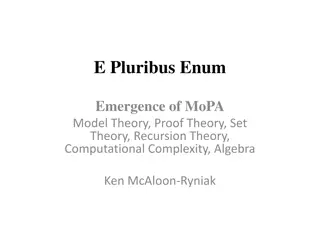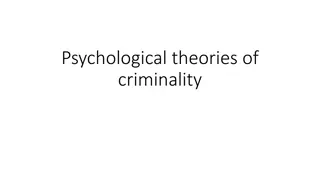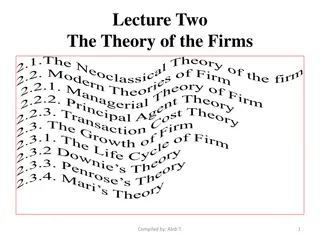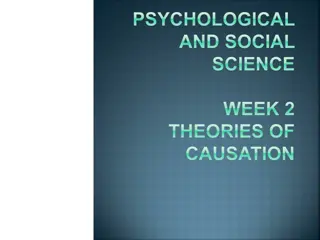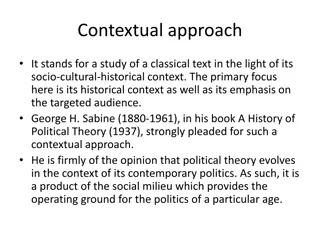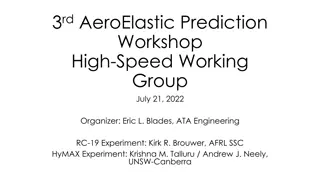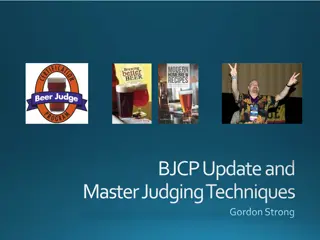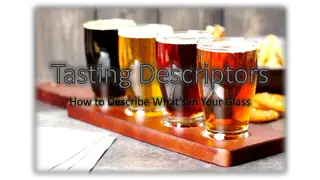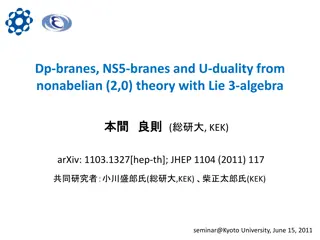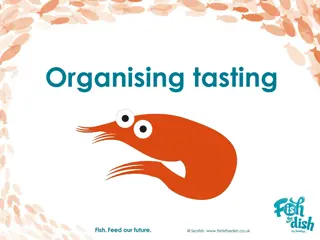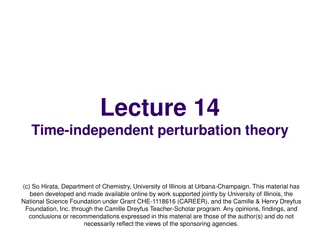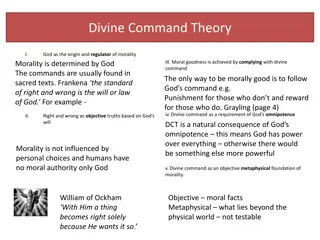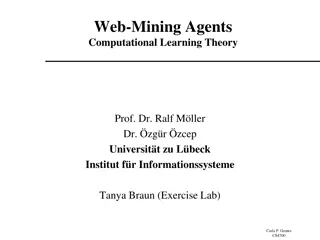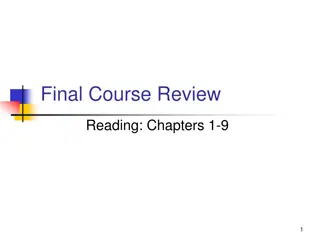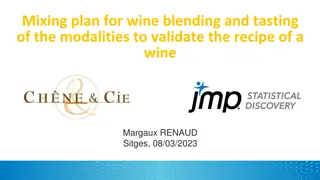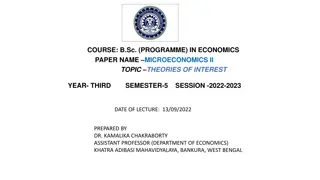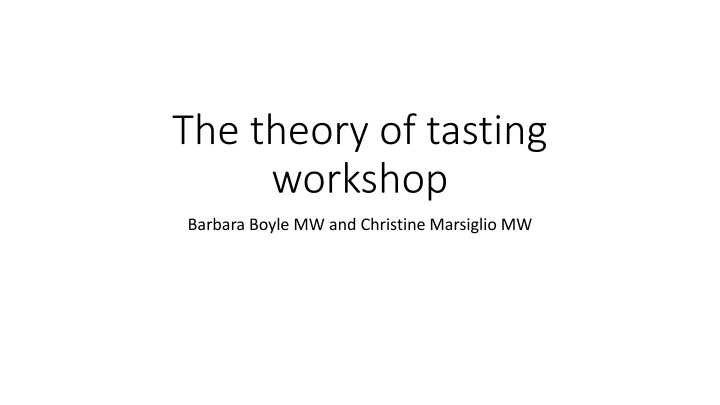
Exploring the Art of Tasting Wines with Experts
Dive into the world of wine tasting with Barbara Boyle MW and Christine Marsiglio MW, as they discuss the importance of identification, valid evidence, grape varieties, wine origins, the language of tannins, and assessing wine quality. Learn valuable insights on analyzing wine characteristics and communicating quality effectively.
Download Presentation

Please find below an Image/Link to download the presentation.
The content on the website is provided AS IS for your information and personal use only. It may not be sold, licensed, or shared on other websites without obtaining consent from the author. If you encounter any issues during the download, it is possible that the publisher has removed the file from their server.
You are allowed to download the files provided on this website for personal or commercial use, subject to the condition that they are used lawfully. All files are the property of their respective owners.
The content on the website is provided AS IS for your information and personal use only. It may not be sold, licensed, or shared on other websites without obtaining consent from the author.
E N D
Presentation Transcript
The theory of tasting workshop Barbara Boyle MW and Christine Marsiglio MW
So how important is Identification? Helpful but not always essential Except for classics Leads to stress if overfocus on it Above all else always identify quality Even if you identify it you still have to communicate it well
Valid evidence and how to identify it REAL / ACCURATE SATISFACTORY CONVINCING MEANINGFUL
Grape varieties The low level of acidity with abv 14.5% and oily texture suggest Viognier. Aromas and flavours of apricot, peach are consistent. Aromas and flavours of apricot, peach suggest Viognier. The low level of acidity with abv 14.5% and oily texture are consistent. Lead with the most important evidence
Origin Ripe roundness of fruit more consistent with Sonoma Coast than other areas of California was not considered a good argument 2019 EXAMINER REPORT so what would be a good argument ? the black fruit profile leads to Pommard Talk about the tannins as a distinguishing attribute (pers comm Phil Tuck)
Language of Tannin 2015 Phil Tuck Unlocking the origins of these wines and assessing the quality required a detailed assessment of the tannins. I would suggest that all candidates arm themselves with a bank of adjectives that describe the differing tannins one can encounter in various grapes, styles and qualities around the globe. That would have helped differentiate the second fruitier style of Nebbiolo from Dolcetto and Barbera. 4 Italian wines, in 2 regional pairs, chianti and Brunello, Barolo and Langhe Nebbiolo
Quality (2019 paper 3) Two proseccos the key was to recognise the delicacy, finesse and fine balance of wine 3 v the bitterness and short finish of wine 4 2018 Over-estimated the quality of the Yellowtail and the Shafer failing to address the sweetness of the first and the high alcohol (14.9%) and heavy oak of the second.
1 reading the exam paper Read the question What is it asking What is it suggesting clues / direction Where are the marks Where should you spend your time
2 tasting with purpose First impressions and how you note these Vary your approach depending on the question Noting observations - is your tasting grid helping or hindering you Decide based on what you are tasting not what you want it to be Go after the marks
3 answer the question posed Don t answer a different question Answer the question completely but succinctly Plan how to answer (plan/taste/think/write) Use relevant valid evidence to support statements Consider how much you need to write E.g. winemaking what has to be explained? what stands out? Pick 2 or 3 defining features that need to be explained and say why wine is like it is. And Structure carefully. Conclude evidence C=E or E=C
Wine 1 is made from a single grape variety. Identify the grape variety. (5 marks). Identify the origin as closely as possible. (10 marks) OR Identify the origin making reference to the grape variety (12 marks) Discuss quality with reference to winemaking techniques used. (10 marks) OR Discuss style with reference to winemaking Comment on the winemaking
Assessing yourself Honesty TICC Review Mark Adapt



